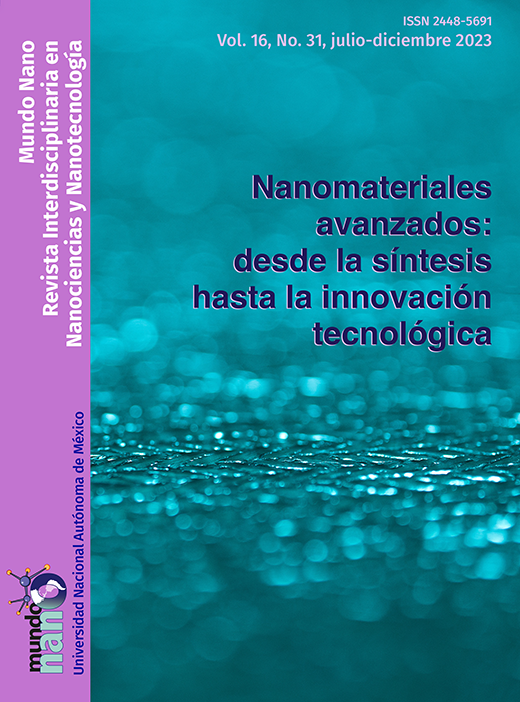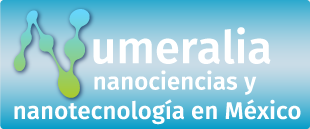Los liposomas en nanomedicina: del concepto a sus aplicaciones clínicas y tendencias actuales en investigación
Resumen
Los liposomas son vesículas artificiales biocompatibles y biodegradables que poseen una estructura con dos compartimentos capaces de albergar moléculas hidrofílicas y lipofílicas, respectivamente. Los liposomas han sido ampliamente investigados durante los últimos veinte años como sistemas de liberación de fármacos, lo cual ha resultado en el desarrollo de diversas tecnologías como liposomas Stealth® y DepoFoam®. Asimismo, han surgido liposomas funcionalizados en su superficie con biomacromoléculas que pueden reconocer blancos biológicos específicos, dando lugar a potenciales terapias de alta selectividad. De igual manera, liposomas que responden a estímulos fisicoquímicos o biológicos y en los que la liberación de un fármaco estaría controlada en función de dicho estímulo. O bien, liposomas que encapsulan 2 o más fármacos, resultando así en terapias de combinación. Los liposomas son las primeras nanomedicinas en alcanzar uso clínico. Actualmente, existen al menos 20 tecnologías liposomales para tratar diversos padecimientos y alrededor de 18 están en fases clínicas de evaluación. La mayoría de liposomas comerciales se utilizan para tratar diferentes tipos de cáncer. Sin embargo, varias formulaciones liposomales para otros padecimientos han mostrado resultados prometedores. En este trabajo revisamos los conceptos básicos sobre liposomas, discutimos los casos de éxito y revisamos aquellas nanoformulaciones que se encuentran en estudios clínicos. Por último, por medio de ciencia de datos, presentamos el panorama actual de la investigación de liposomas en el área de la nanomedicina. Sin duda, los liposomas están y seguirán estando a la vanguardia en el traslado de nanotecnologías en beneficio de la salud de la población.
Citas
ACS (American Cancer Society). (2020). Types and phases of clinical trials. https://www.cancer.org/.
Angst, M. S. y Drover, D. R. (2006). Farmacología de medicamentos formulados con DepoFoam™. Clin Pharmacokinet, 45: 1153-1176. https://doi.org/10.2165/00003088-200645120-00002.
Aryasomayajula, B., Salzano, G. y Torchilin, V. P. (2017). Multifunctional liposomes. Methods in molecular biology, 1530: 41-61, Clifton, N. J. https://doi.org/10.1007/978-1-4939-6646-2_3.
Ashrafizadeh, M., Delfi, M., Zarrabi, A., Bigham, A., Sharifi, E., Rabiee, N., Paiva-Santos, A. C., Kumar, A. P., Tan, S. C., Hushmandi, K., Ren, J., Zare, E. N. y Makvandi, P. (2022). Stimuli-responsive liposomal nanoformulations in cancer therapy: Pre-clinical & clinical approaches. Journal of Controlled Release: Official Journal of the Controlled Release Society, 351: 50-80. https://doi.org/10.1016/j.jconrel.2022.08.001.
Aubel-Sadron, G. y Londos-Gagliardi, D. (1984). Daunorubicin and doxorubicin, anthracycline antibiotics, a physicochemical and biological review. Biochimie, 66(5): 333-52. https://doi.org/10.1016/0300-9084(84)90018-x.
Barenholz, Y. (2012). Doxil®-the first FDA-approved nano-drug: lessons learned. Journal of Controlled Release: Official Journal of the Controlled Release Society, 160(2), 117–134. https://doi.org/10.1016/j.jconrel.2012.03.020.
Beltrán, E., López, A., Higuera, I., Velázquez, J. y Cardona A. (2019). Nanomedicine review: clinical developments in liposomal applications. Cancer Nano, 10: 11. https://doi.org/10.1186/s12645-019-0055-y.
Bulbake, U., Doppalapudi, S., Kommineni, N. y Khan, W. (2017). Liposomal formulations in clinical use: an updated review. Pharmaceutics, 9(2): v12. https://doi.org/10.3390/pharmaceutics9020012.
Cai, R. y Chen, C. (2019). The crown and the scepter: Roles of the protein corona in nanomedicine. Advanced Materials, 31(45): e1805740. https://doi.org/10.1002/adma.201805740.
Canão, F., Ferreira, H., Neves, N. M., (2022), Liposomal formulations for lung cancer treatment in the last two decades: a systematic review. Journal of Cancer Research and Clinical Oncology, 148(9): 2375-2386. https://doi.org/10.1007/s00432-022-04079-x.
Čeh, B., Winterhalter, M., Frederik, P. M., Vallner, J. J. y Lasic, D. D. (1997). Stealth® liposomes: from theory to product. Advanced Drug Delivery Reviews, 24(2-3): 165-177. https://doi.org/10.1016/S0169-409X(96)00456-5.
Dass, C. R. y Choong, P. F. (2006). Selective gene delivery for cancer therapy using cationic liposomes: in vivo proof of applicability. Journal of Controlled Release: Official Journal of the Controlled Release Society, 113(2): 155-163. https://doi.org/10.1016/j.jconrel.2006.04.009.
Dou, Y., Hynynen, K. y Allen, C. (2017). To heat or not to heat: challenges with clinical translation of thermosensitive liposomes. Journal of Controlled Release: Official Journal of the Controlled Release Society, 249: 63-73. https://doi.org/10.1016/j.jconrel.2017.01.025.
Dymek, Michał y Sikora, Elżbieta. (2022). Liposomes as biocompatible and smart delivery systems – The current state. Advances in Colloid and Interface Science, 309: 102757. https://doi.org/10.1016/j.cis.2022.102757.
El Maghraby, G. M., Barry, B. W. y Williams, A. C. (2008). Liposomes and skin: from drug delivery to model membranes. European Journal of Pharmaceutical Sciences: Official Journal of the European Federation for Pharmaceutical Sciences, 34(4-5): 203-222. https://doi.org/10.1016/j.ejps.2008.05.002.
EMA (European Medicines Agency). (2013). European public assessment report summary for the public, Mepact, mifamurtide. https://www.ema.eu.
EMA (European Medicines Agency). (2015). Mosquirix: Opinion on medicine for use outside EU. https://www.ema.eu.
EMA (European Medicines Agency). (2022). An overview of Zolsketil pegylated liposomal and why it is authorised in the EU. Zolsketil pegylated liposomal (doxorubicin). https://www.ema.eu.
Fantini, M., Gianni, L., Santelmo C., Drudi F., Castellani C., Affatato A., Nicolini M., Ravaioli, A., (2011). Lipoplatin treatment in lung and breast cancer. Chemotherapy Research Practice, 2011: 125192. https://doi.org/10.1155/2011/125192.
FDA (Food and Drug Administration). (2022). Withdrawal of approval of new drug application for MARQIBO. Federal Register, FDA-2022-N-0354, 89, 84, 25644-25645.
Forssen, E. (1997). The design and development of DaunoXome® for solid tumor targeting in vivo. Advanced Drug Delivery Reviews, 24(2-3): 133-150. https://doi.org/10.1016/S0169-409X(96)00453-X.
Gabizon, A., Isacson, R., Libson, E., Kaufman, B., Uziely, B., Catane, R., Ben-Dor, C. G., Rabello, E., Cass, Y. y Peretz, T. (1994). Clinical studies of liposome-encapsulated doxorubicin. Acta oncologica, 33(7): 779-786, Stockholm, Suecia. https://doi.org/10.3109/02841869409083948.
Hu, M. y Huang, L. (2022). Strategies targeting tumor immune and stromal microenvironment and their clinical relevance. Advanced Drug Delivery Reviews, 183: 114137. https://doi.org/10.1016/j.addr.2022.114137.
INEGI (Instituto Nacional de Estadística y Geografía). (2022). Estadísticas de defunciones registradas en el año 2021, 83-90. https://www.inegi.org.
Kawakami, Lisa M., Yoon, Bo Kyeong, Jackman, Joshua A., Wolfgang, Knoll, Weiss, Paul S. y Cho, Nam-Joon. (2017). Understanding how sterols regulate membrane remodeling in supported lipid bilayers. Langmuir, 33(51): 14756-14765. https://doi.org/10.1021/acs.langmuir.7b03236.
Keith L. Willes, Sydney A. McFarland, Trent E. Johnson, Daniel R. Hart y Walter F. Paxton. (2022). Modulating and modeling the surface ζ potential of hybrid lipid/polymer nanovesicles: implications for surface modification and drug delivery. ACS Applied Nano Materials, 5(10): 13820-13828. https://doi.org/10.1021/acsanm.2c01407.
Kontermann, R. E. (2011). Inmunoliposomas. En Schwab, M. (ed.), Encyclopedia of cancer. Berlín, Heidelberg: Springer. https://doi.org/10.1007/978-3-642-16483-5_2997.
Kristensen, Kasper, Urquhart, Andrew J., Thormann, Esben y Andresen, Thomas L. (2016). Binding of human serum albumin to PEGylated liposomes: insights into binding numbers and dynamics by fluorescence correlation spectroscopy. Nanoscale, 8(47): 19726-19736, The Royal Society of Chemistry. http://dx.doi.org/10.1039/C6NR05455B.
Kroemer, G., Zitvogel, L., Galluzzi, L., (2013). Victories and deceptions in tumor immunology: Stimuvax®. Oncoimmunology, 2(1): e23687. https://doi.org/10.4161/onci.23687.
Lee, Y. y Thompson, D. H. (2017). Stimuli-responsive liposomes for drug delivery. Wiley interdisciplinary reviews. Nanomedicine and Nanobiotechnology, 9(5): https://doi.org/10.1002/wnan.1450.
Liprostin Group. (2020). Vascular pulmonary diseases. http://www.LiprostinGroup.com.
Liu, P., Chen, G., Zhang, J. (2022). A review of liposomes as a drug delivery system: Current status of approved products, regulatory environments, and future perspectives. Molecules, 27(4): 1372. https://doi.org/10.3390/molecules27041372.
Mahato, Rubi. (2017). Emerging nanotechnologies for diagnostics, drug delivery, and medical devices. Chapter 2 -Multifunctional micro- and nanoparticles, micro and nano technologies. Elsevier, 21-43. http://dx.doi.org/10.1016/B978-0-323-42978-8.00002-4.
Marichal, L., Degrouard, J., Gatin, A., Raffray, N., Aude, J., Boulard, Y., Pin, S. (2020). From protein corona to colloidal self-assembly: The importance of protein size in protein-nanoparticle interactions. Langmuir, 36(28): 8218-8230. https://doi.org/10.1021/acs.langmuir.0c01334.
McDonald, G. (2017). Pacira to stop making DepoCyt due to long-term production problems. https://www.outsourcing-pharma.com.
McKinney, W. (2010). Data structures for statistical computing in Python. Proceedings of the 9th Python in Science Conference, 56-61, https://doi.org/10.25080/Majora-92bf1922-00a.
Mojarad-Jabali, S., Farshbaf, M., Walker, P. R., Hemmati, S., Fatahi, Y., Zakeri-Milani, P., Sarfraz, M. y Valizadeh, H. (2021). An update on actively targeted liposomes in advanced drug delivery to glioma. International Journal of Pharmaceutics, 602: 120645. https://doi.org/10.1016/j.ijpharm.2021.120645.
Nakhaei, P., Margiana, R., Bokov, D. O., Abdelbasset, W. K., Jadidi, Kouhbanani, M. A., Varma, R. S., Marofi, F., Jarahian, M. y Beheshtkhoo, N. (2021). Liposomes: structure, biomedical applications, and stability parameters with emphasis on cholesterol. Front. Bioeng. Biotechnol, 9: 705886. https://doi.org/10.3389/fbioe.2021.705886.
NCI (National Cancer Institute). (2019). Immunotherapy to treat cancer. National Institutes of Health. https://www.cancer.gov/about-cancer/treatment/types/immunotherapy.
Needham, D., Anyarambhatla, G., Kong, G. y Dewhirst, M. W. (2000). A new temperature-sensitive liposome for use with mild hyperthermia: characterization and testing in a human tumor xenograft model. Cancer Research, 60(5): 1197-1201. www.scopus.com.
Noble, G. T., Stefanick, J. F., Ashley, J. D., Kiziltepe, T. y Bilgicer, B. (2014). Ligand-targeted liposome design: challenges and fundamental considerations. Trends in Biotechnology, 32(1): 32-45. https://doi.org/10.1016/j.tibtech.2013.09.007.
Nosova, A. S., Koloskova, O. O., Nikonova, A. A., Simonova, V. A., Smirnov, V. V., Kudlay, D., Khaitov, M. R. (2019). Diversity of PEGylation methods of liposomes and their influence on RNA delivery. Medchemcomm, 10(3): 369-377. https://doi.org/10.1039%2Fc8md00515j.
Nsairat, H., Khater, D., Sayed, U., Odeh, F., Al Bawab, A., Alshaer, W. (2022) Liposomes: structure, composition, types, and clinical applications. Heliyon, 8(5): e09394. https://doi.org/10.1016%2Fj.heliyon.2022.e09394.
Pratigyan Dash, Anna Maria Piras, Mamoni Dash. (2020). Cell membrane coated nanocarriers – An efficient biomimetic platform for targeted therapy. Journal of Controlled Release, 327: 546-570. ISSN 0168-3659. https://doi.org/10.1016/j.jconrel.2020.09.012.
Rincón-López, J., Almanza-Arjona, Y. C., Riascos, A. P., Rojas-Aguirre, Y. (2021). When cyclodextrins met data science: unveiling their pharmaceutical applications through network science and text-mining. Pharmaceutic, 13(8): 1297. https://doi.org/10.3390/pharmaceutics13081297.
Rojas-Aguirre, Y., Aguado-Castrejón, K., González-Méndez, I. (2016). La nanomedicina y los sistemas de liberación de fármacos: ¿la (r)evolución de la terapia contra el cáncer? Educación Química, 27(4): 286-291. https://doi.org/10.1016/j.eq.2016.07.002.
Sercombe, L., Veerati, T., Moheimani, F., Wu, S. Y., Sood, A. K., Hua, S. (2015). Advances and challenges of liposome assisted drug delivery. Front. Pharmacol., 6: 286. https://doi.org/10.3389/fphar.2015.00286.
Sharma, Amarnath y Sharma, Uma S. (1997). Liposomes in drug delivery: Progress and limitations. International Journal of Pharmaceutics, 154(2): 123-140, 0378-5173. https://doi.org/10.1016/S0378-5173(97)00135-X.
Shaw, T. K. y Paul, P. (2022). Recent approaches and success of liposome-based nano drug carriers for the treatment of brain tumor. Current Drug Delivery, 19(8): 815-829. https://doi.org/10.2174/1567201818666211213102308.
Silverman, J. A., Deitcher, S. R. (2013). Marqibo® (vincristine sulfate liposome injection) improves the pharmacokinetics and pharmacodynamics of vincristine. Cancer Chemother Pharmacol, 71(3): 555-64. https://doi.org/10.1007/s00280-012-2042-4.
Sivan-Peretz D., Dima-Shamrakov, Maxim-Varenik, Erez-Koren, Einat-Nativ-R., Yechezkel-Barenholz, Oren-Regev. (2018). Practical aspects in size and morphology characterization of drug-loaded nano-liposomes. International Journal of Pharmaceutics, 547(1–2): 648-655. ISSN 0378-5173. https://doi.org/10.1016/j.ijpharm.2018.06.037.
Taléns-Visconti, R., Díez-Sales, O., De Julián-Ortiz, J. V. y Nácher, A. (2022). Nanoliposomes in cancer therapy: marketed products and current clinical trials. International Journal of Molecular Sciences, 23(8): 4249. https://doi.org/10.3390/ijms23084249.
Torchilin-Vladimir, P. (1996). How do polymers prolong circulation time of liposomes? Journal of Liposome Research, 6(1): 99-116. https://doi.org/10.3109/08982109609037204.
Van-Hoogevest, P. y Wendel, A. (2014). The use of natural and synthetic phospholipids as pharmaceutical excipients. European Journal of Lipid Science and Technology, 116(9): 1088-1107. https://doi.org/10.1002/ejlt.201400219.
Wang, Wei y Hao, Yuhao y Liu, Yusheng y Li, Rui y Huang, Da‐Bing y Pan, Yue‐Yin. (2020). Nanomedicine in lung cancer: Current states of overcoming drug resistance and improving cancer immunotherapy. Wiley Interdisciplinary Reviews. Nanomedicine and Nanobiotechnology, 13(1). https://doi.org/10.1002/wnan.1654.
Waterhouse, D. N., Tardi, P. G., Mayer, L. D. y Bally, M. B. (2001). A comparison of liposomal formulations of doxorubicin with drug administered in free form: changing toxicity profiles. Drug Safety, 24(12): 903-920. https://doi.org/10.2165/00002018-200124120-00004.
WHO (World Health Organization). (2022). Cancer. https://www.who.int/news.
Yarosh, Daniel B. (2001). Enhancement of repair of UV damage in humans. Comprehensive Series in Photosciences, 3(31): 593-612. Elsevier. https://doi.org/10.1016/S1568-461X(01)80066-1.

Mundo Nano. Revista Interdisciplinaria en Nanociencias y Nanotecnología, editada por la Universidad Nacional Autónoma de México, se distribuye bajo una Licencia Creative Commons Atribución-NoComercial 4.0 Internacional.
Basada en una obra en http://www.mundonano.unam.mx.



